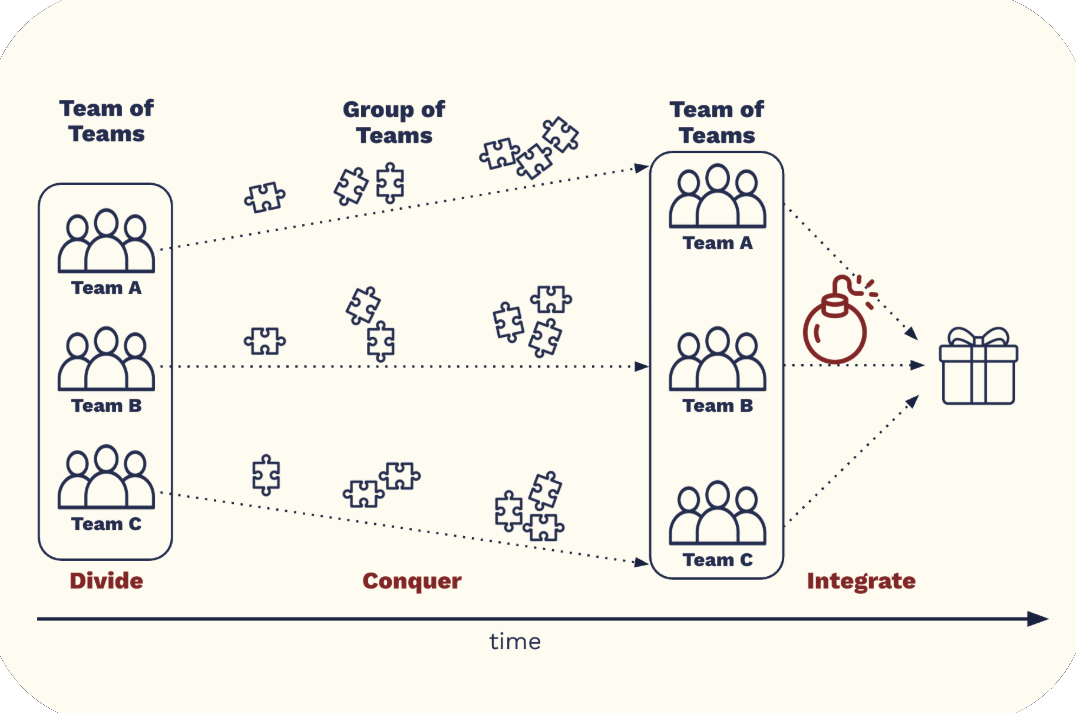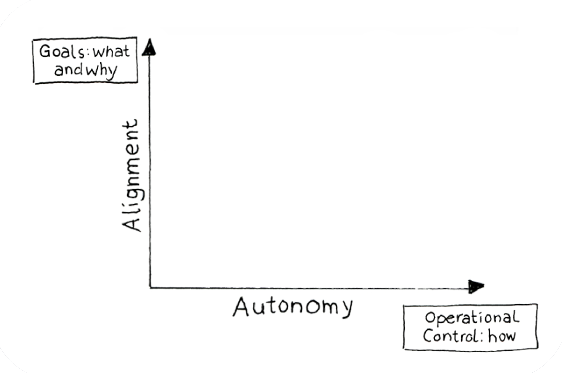
What are Floating Teams
Floating Teams are an interesting option to create teams that are small, stable and cross-functional - something which is very hard to achieve otherwise.

Adjusting Goals to Teams?
What are the pros and cons of building goals and tasks around existing team structures vs. doing the opposite? What can we do to find our sweet spot?

Are Smaller Teams Better?
The question of the “right” team size is more nuanced than often assumed. In this post I discuss some aspects that are often neglected.

Divide-Conquer-Integrate?
In this post I discuss a common pattern for building new functionality that requires multiple product teams to collaborate: the divide-conquer-integrate pattern.

Cross-functional Teams
This post explores the topic of cross-functionality and links it to the dimensions of team size and team stability - featuring the A-Team.

Leadership Development
In this post I discuss some of the hidden assumptions in organizations that make it hard to have great leadership development programs.

Overcorrecting and Oscillation
This post describes a common scenario of organizational oscillation: Going back and forth between extreme versions of centralized and decentralized design.

Team Stability Is Not Binary
Team stability is often seen as a binary property. In this post I discuss the benefits of viewing it as a sliding scale and place it in the Triangle of Teaming.

OKRs, Alignment and Autonomy
In this post I outline how OKRs can be used in a way that allows for high alignment and high autonomy at the same time - matching Stephen Bungay’s model.

Ineffective Leadership Teams
This post outlines three common issues many leadership teams are suffering from: Team size, unclear purpose, and people being members of too many different teams.

Defaults and Standards
Defaults can be a great alternative to standards if we want to support teams coming up with their own ways of working without reinventing the wheel. Defaults suggest starting points without demanding compliance.

First Team and Divided Loyalties
Being member of many different “team” often leads to a variety of problems - from poor quality to frustration and stress. The concept of the First Team can help trigger important discussions about expectations and commitment levels.

Kickoff workshops - overlooked and misunderstood
Why we often underestimate the importance of kickoff workshops and what the 60-30-10 rule has to do with it.